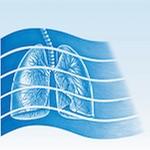
Restless Legs Syndrome
7 December 2014, 11:51AM
Claire McCall
At the New Zealand Sleep & Respiratory Institute in Green Lane, technicians at the overnight sleep laboratory test for conditions like Obstructive Sleep Apnoea (OSA) and other sleep disorders such as problems with circadian rhythms, teeth grinding and narcolepsy. In about five percent of the cases, clients also complain of Restless Legs Syndrome.
Periodic limb movement (PLM) is common at night and is monitored in the lab through electrodes that are attached to the legs. Roughly every 90 seconds, most people will almost imperceptibly move their legs. It is an involuntary movement and, although it is not ‘normal’, there is no need for treatment unless sleep quality is affected.
However, Restless Legs Syndrome, which is a neurological disorder, is diagnosed when the sensations are negligible during daylight hours but become so severe that they cause a patient to wake at night. Another diagnostic factor is if the strange sensations are relieved by moving the legs. Typically, there is a repetitive movement of the big toe towards the shin, or bending the ankle, knee or hip. This restlessness lasts between 5 seconds to 1½ minutes.
In many cases, the only treatment needed is reassurance, but iron supplements may be given if there’s a deficiency. In cases where there is considerable pain, codeine-based medicine can be taken.
10 Facts about Restless Legs Syndrome
1. Women are twice as likely to be affected as men.
2. Not everyone experiences Restless Legs Syndrome in the same way. Some people get a throbbing or pulling sensation, others say it’s a creepy crawly feeling that is hard to describe. But most everyone reports an overwhelming urge to move their legs.
3. One main underlying cause of RLS is an iron-deficiency – about 20 per cent of patients fall into this category.
4. While the syndrome is known to occur in pregnancy, there are other phenotypes that are prone to developing it. These include breast-feeding women and those who have menorrhagia – abnormally heavy and prolonged menstrual bleeding.
5. Post-menopausal women are also susceptible and are three times as likely to have it.
6. Research shows that there is almost certainly a genetic component to the condition.
7. RLS is not confined to the legs. Sometimes the arms and lower trunk can feel the same sensations.
8. The condition is associated with anxiety and depression.
9. While severe cases are treated with low-dose dopamine medications, lifestyle changes can make a difference. Try a walk before bedtime or leg stretches just before hopping into bed.
10. RLS is not a precursor to Parkinson’s disease as many people believe.
There are other more serious conditions that can cause Restless Legs Syndrome, so if you experience symptoms as described above, contact your GP and ask for a referral.
About NZRSI
The NZ Respiratory and Sleep Institute is a private specialist medical practice providing respiratory and sleep clinical consultation, sleep testing and lung function testing. See www.nzrsi.co.nz for more information.
